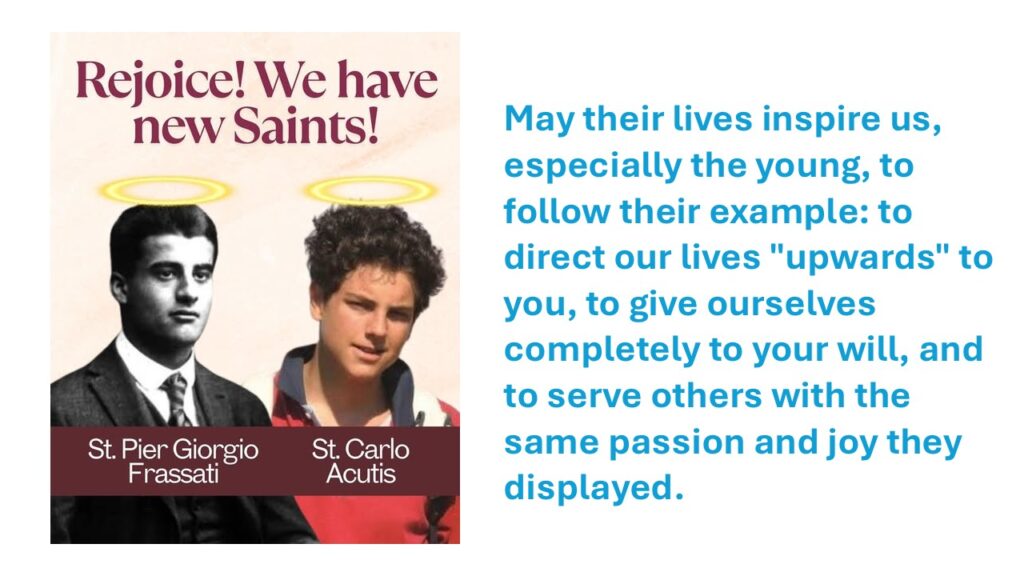
November 30, 2025, First Sunday of Advent: Isaiah 2:1-5; Psalm 122: 1-2, 3-4, 4-5, 6-7, 8-9; Romans 13:11-14; Matthew 24:37-44
“Let us go rejoicing to the house of the Lord,” from Psalm 122, reminds us of the joy and anticipation we feel when looking forward to attending Church. As a child, I was always touched by the sight of families gathering together, united in prayer, and then carrying that sense of togetherness to visits with grandparents and/or relatives. Over time, I have come to realize that the “house of the Lord” is not just a physical building, it is also our soul. Gradually, we become more aware of the joy and peace within us. It is in this spiritual house, within our soul, that God resides, welcoming us no matter our ups and downs, failures, and successes.
Approaching Advent again every year, we are aware that Jesus our Savior will be born and hopefully in our hearts to love others. The theme for the first Sunday in Advent 2025 is centered around “Joy”, as highlighted by the Church of England. Additionally, another theme for Advent 2025 is “Peace be within you”, which emphasizes inner peace during this season. These themes aim to inspire hope and preparation as the Advent season begins. God bless you, MK

Pope Leo XIV’s coat of arms
The motto
Pope Leo XIV has also chosen a motto that reflects this Augustinian tradition: In Illo uno unum, which means “In the One, we are one.”

The phrase is taken from Saint Augustine’s Exposition on Psalm 127, where he explains that “although we Christians are many, in the one Christ we are one.” (Vatican News)
Pope Leo XIV – Intentions for the month of November 2025: Pope Leo XIV’s prayer intention for October is For the prevention of suicide
Let us pray that those who are struggling with suicidal thoughts might find the support, care, and love they need in their community, and be open to the beauty of life.

“BE DOERS OF THE WORD,” by Bishop James S. Wall, Bishop of the Gallup diocese 2024: “Most Rev. James S. Wall, Bishop of Gallup discusses his special connection to the diocese and his experience as bishop in this unique diocese. Bishop Wall also talks about how the Catholic Home Missions Appeal helps provide the faithful of his diocese with the most basic things and why contributing to the Collection is so important. Bishop Wall’s diocese also has the highest percentage of Native American lands of any diocese in the country, he briefly discusses how the Church can minister to Native Americans through the Pastoral Framework for Indigenous Ministry “Keeping Christ’s Sacred Promise”.

MISSION STATEMENT –The Monastery of Our Lady of the Desert is a monastic community of women in the Benedictine tradition. We profess vows of stability, conversion of life and obedience. Our primary mission, is to seek God through a life of prayer, silence and solitude. Our way of life frees us to give glory and praise to God, intercede through prayer for the needs of the world and hospitality
